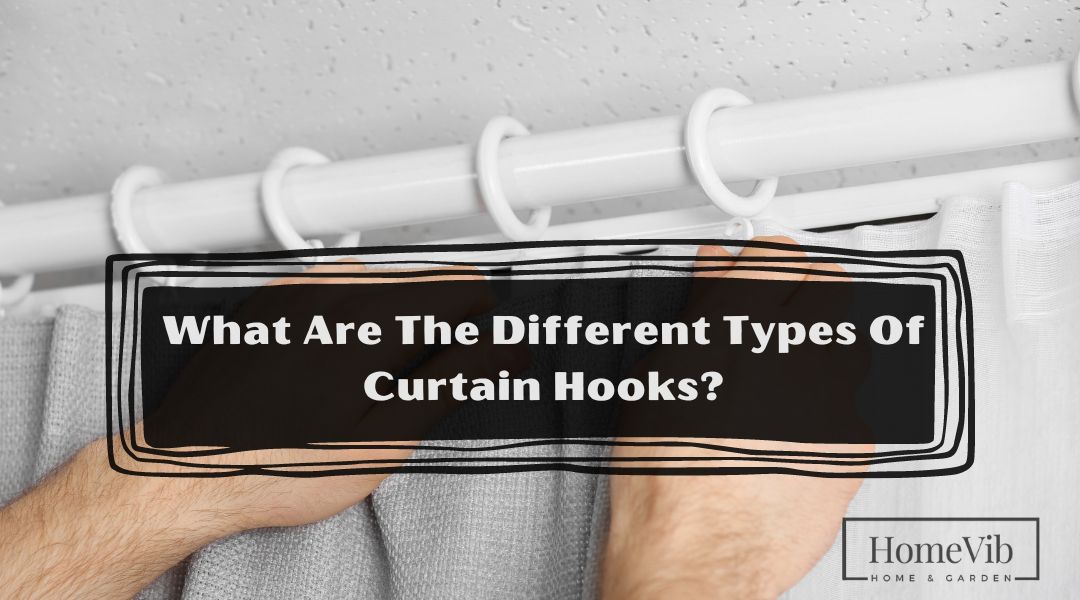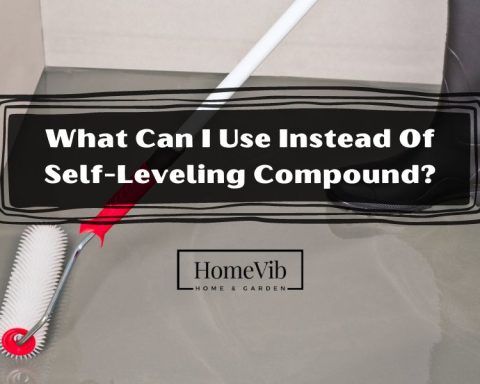Curtain hooks may seem like a small element in your home decor. However, they play an important role in enhancing your household spaces. It provides the overall aesthetic appeal of your window treatments.
Therefore, the right curtain hooks can make all the difference in your interior. Let’s begin to determine their functions and variations.
Some popular curtain hooks are pin-on, sew-on, and s-shaped. These hooks are typically made from metal. There are also clip rings, a pleater, and built-in hooks for more versatile applications.
Meanwhile, holdbacks, tracks, and screw-in hooks are a few that homeowners prefer. If you don’t want to use traditional curtain hooks, adhesive curtain hooks can be your choice.
What Are Curtain Hooks?
Curtain hooks are also known as drapery hooks. These are types of hardware used to hang curtains or drapes from a curtain rod or rail. They come in various designs and sizes, depending on the type of curtains or drapes and the style of the rod.
In addition, they play a big role in supporting the weight of the curtain. It also allows it to fall smoothly and contributes to the overall aesthetics of the drapes.
The choice of curtain hooks depends on the style of the curtain.
- type of header
- type of rod
For example, pin-on hooks are commonly used with curtains that have a pleated header. Meanwhile, s-hooks might be typically used with grommet curtains.
Curtain hooks function and can contribute to the room’s aesthetic. With designs from simple to decorative elements, they add a dash of elegance to spaces.
10 Different Types Of Curtain Hooks
Curtain hooks can be typically divided into several types. They are usually based on their designs, functionality, and curtains’ style.
Here are 10 common types of curtain hooks:
1. Pin-On Hooks
These are versatile hooks used for a variety of drapery styles. They feature a sharp pin on one end that pierces the curtain fabric. At the same time, the hook on the other end attaches to the curtain rod or rings.
Pin hooks are typically made of durable metal. It also comes in varying lengths to accommodate different curtain designs. Ideal for heavy curtains, they’re often concealed within the pleats.
These pleats keep the focus on your drapery design rather than the hardware.
2. Sew-On Hook
Sew-on hooks are generally designed to be sewn directly onto the curtain material. This type of hook is typically flat, with a curved hook at one end and one or more holes at the other.
The holes are for stitching the hook onto the curtain. The hook can attach to a curtain ring or a track runner, allowing the curtain to hang and move smoothly.
Sew-on hooks offer a high level of control over the curtain’s pleating. At the same time, it adds visual appeal to the overall appearance.
These are particularly useful for heavy or complex drapery styles.
3. S-Hooks
S-hooks are a type of curtain hook that resembles the letter “S.” They’re often used with curtains that feature loops or rings at the top.
That is where one end of the ‘S’ hook goes through the loop or ring, and the other end goes over the curtain rod.
This design makes them versatile and easy to use with various curtains and rods. Some S-hooks do not hide behind curtain fabric which can contribute to the look of the curtain setup.
Additionally, their simplicity allows for easy curtain installation and removal. That makes them a convenient choice for changing curtains.
4. C-Rings with Clips or Hooks
These versatile hooks feature a ‘C’ shaped ring with a small clip or hook attached. The clip grabs the top edge of the curtain, and the ‘C’ shaped ring slides onto the curtain rod.
Ideal for lightweight curtains, these hooks allow for easy curtain removal. The clip can grip directly onto the fabric, allowing you to hang the curtains without sewing.
C-Rings with Clips or Hooks are often chosen for aesthetic reasons too. Because they are visible, they come in various finishes to match your curtain rod, from polished chrome to antique brass to matte black.
5. Pleater Hooks
These hooks are specifically designed for pinch pleat curtains. It features groups of pleats evenly spaced along the top edge.
Each pleater hook has multiple prongs (2-4 typically) that slot into the back of these pleats. These prongs slot into the curtain’s pleats creating the characteristic ‘pinched’ look.
The hook part of the pleater hook then hangs from the curtain rod or track. Pleater hooks allow for the curtain to maintain its shape evenly.
It provides a high-end, tailored aesthetic that works well in formal spaces. With pleater hooks, you can achieve a sophisticated window treatment.
6. Built-In Hooks
These curtains come with pre-installed hooks, often sewn into the back or top of the curtain. This feature saves you from attaching separate hooks or rings to your curtains.
The built-in hooks can easily slide onto a curtain rod or track. As an advantage, it simplifies the installation process. Built-in hooks curtains are perfect for those who want a hassle-free hanging solution.
Note that while these curtains are easy to hang, you need to ensure the spacing and design of the hooks. Remember to match it with your rod or track system for smooth operation.
7. Holdbacks
A curtain holdback’s function is to “hold back” the curtains, pulling them off to the side of the window. They are both functional and decorative, allowing natural light into the room.
At the same time, it adds style and elegance to your window treatments. They may feature a simple hook or post design or be more ornate with sculpted motifs or finials.
The holdback is typically mounted to the wall on either side of the window. Each positioning can vary based on the size and style of your window.
However, they are generally installed about 2/3 of the way down from the top of the window.
8. Track Hooks
Track hooks, or glider hooks, come together with curtain track systems. Unlike traditional curtain rods, a curtain track system consists of a slim track.
Often made of aluminum or plastic, these are typically mounted to the wall or the ceiling. Track hooks are small pieces of plastic or metal with a hook at one end and a small eyelet at the other.
These eyelets snap into or slide onto the runners or gliders that move along the curtain track. closing. These are beneficial for heavier curtains because the gliders distribute weight evenly.
9. Screw-In Hooks
These hooks are generally made of sturdy materials like metal. It has a threaded screw on one end and a hook on the other.
The screw end is typically designed to be directly inserted into a pre-drilled hole. You can use it with curtains that have loops, rings, or grommets at the top, where the curtain hangs on the hook.
Screw-in hooks offer a more permanent and durable solution for hanging curtains. They are often used for heavier window treatments that require stronger support.
Some screw-in hooks have decorative heads, adding a touch of elegance to your windows.
10. Adhesive Curtain Hooks
These are also called stick-on hooks that stick to a surface using a strong adhesive. They are typically made from plastic and come with self-adhesive backing.
You peel off the protective covering and press the hook onto a clean, smooth surface. Adhesive hooks are generally designed to support lightweight curtain materials.
This makes them a good choice for sheer or cafe curtains. They are an excellent option for renters or those who want to avoid making permanent holes.
They’re useful for hanging curtains where standard hooks cannot be practically used.
How To Choose the Best Curtain Hooks?
Metal Curtain Rings with Clips
Selecting the best curtain hooks involves understanding your curtains’ type and weight. Next is to choose a compatible material like plastic for lighter curtains.
At the same time, use metal or wood for heavier ones. Then match the hook style with your room’s decor, considering practicality and ease of use.
Ensure the hook size fits your curtain rod. Additionally, consider that heavier curtains need a hook every 4-5 inches.
While cost matters, don’t compromise on quality. This is especially true for heavier or more costly curtains.
High-quality hooks ensure durability, preventing potential curtain damage. Remember, the hooks serve their function and fit with the overall aesthetic of your space.
By these factors, you can choose the most suitable curtain hooks for your needs.
Can You Hang Curtains Without Hooks?
Yes, it’s possible to hang curtains without hooks. However, several factors need to be generally considered.
To start with, the weight of your curtains plays a crucial role. With lighter materials, it will be easier to hang without hooks.
The design is also important; some are made to accommodate curtains. Next is the curtain’s structure. Some have built-in methods for hanging directly onto rods.
Practicality is important too. Some curtains hung without hooks can be harder to remove and rehang for cleaning.
Lastly, aesthetics play a crucial role. Others prefer the clean lines achieved by hanging curtains without hooks.
Therefore, while feasible, hanging curtains without hooks requires careful consideration of various factors.
What Can I Use Instead Of Curtain Hooks?
If you don’t want to use traditional curtain hooks, there are several options:
- Rod Pocket Curtains: A built-in pocket slides over the curtain rod.
- Tab Top or Grommet Curtains: These curtains have loops or rings (grommets) sewn into the top. The curtain rod goes through these loops or rings.
- Curtain Clips: A handy option for curtains without pockets or loops. You clip the curtain onto the rod.
- Tension Rods: Ideal for light curtains or cafe curtains. These rods stretch between two walls or inside a window frame.
- Adhesive Hooks: Stick-on hooks can be typically used for very light, sheer curtains.
Always remember to consider the weight and size of your curtains. At the same time, evaluate the style you’re aiming for when deciding on the alternatives.
Heavy or large curtains may require more sturdy solutions.
Can I Use Adhesive Hooks For Hanging Curtains?
Adhesive Hooks Heavy Duty 33lb(Max)
Yes, you can use adhesive hooks for hanging curtains. However, it’s important to know the weight of your curtains and the strength of the adhesive hooks.
Adhesive hooks work best for light to medium-weight curtains. These hooks stick to the wall or window frame and can hold the curtain rod.
However, if your curtains are too heavy, the adhesive hooks might not be able to bear the weight.
Furthermore, it’s important to ensure the surface you’re applying is clean and dry. And keep in mind that the adhesive may leave damage the surface when removed.
Lastly, it’s advisable to test the hooks with the curtain’s weight before using it for the long term.











